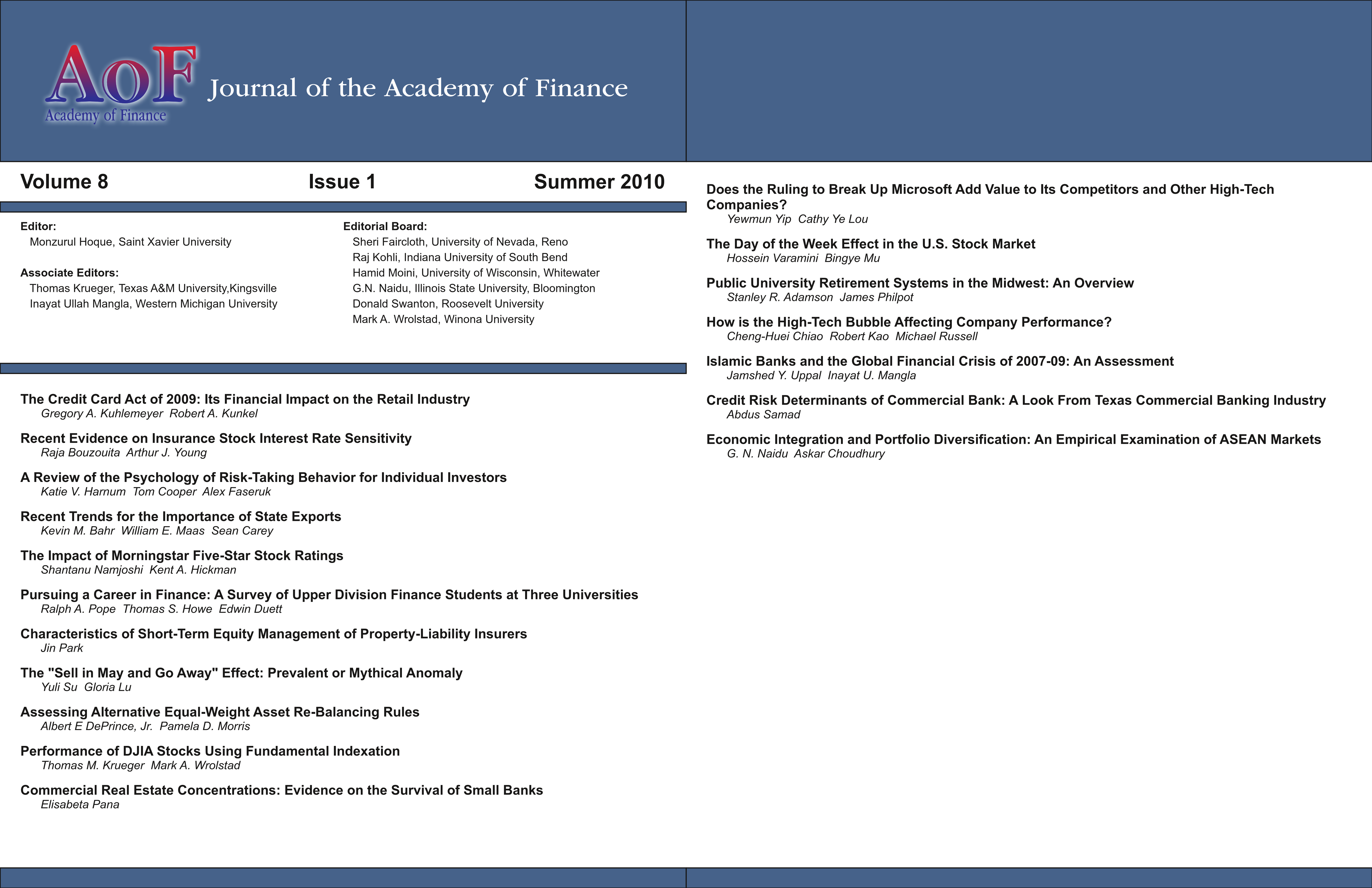The “Sell in May and Go Away” Effect: Prevalent or Mythical Anomaly
DOI:
https://doi.org/10.58886/jfi.v8i1.2358Abstract
The purpose of this study is to empirically examine the “Sell in May and Go Away” Effect over the period ranging from 1970 to 2010. This paper examines 50 worldwide markets and finds that the Sell in May Effect is more evident in developed than in emerging markets. The Sell in May effect does have a stronger presence in Europe and in a number of countries that were former colonies or under direct influence of European countries, which may lead these emerging markets to be more highly correlated to developed markets. Sub-periods results show that the Sell in May effect is non-stationary. It is found that the strong presence of the Sell in May effect in Europe during the period of 1990-1999 is less apparent during the most recent subperiod of 2000-2010.





